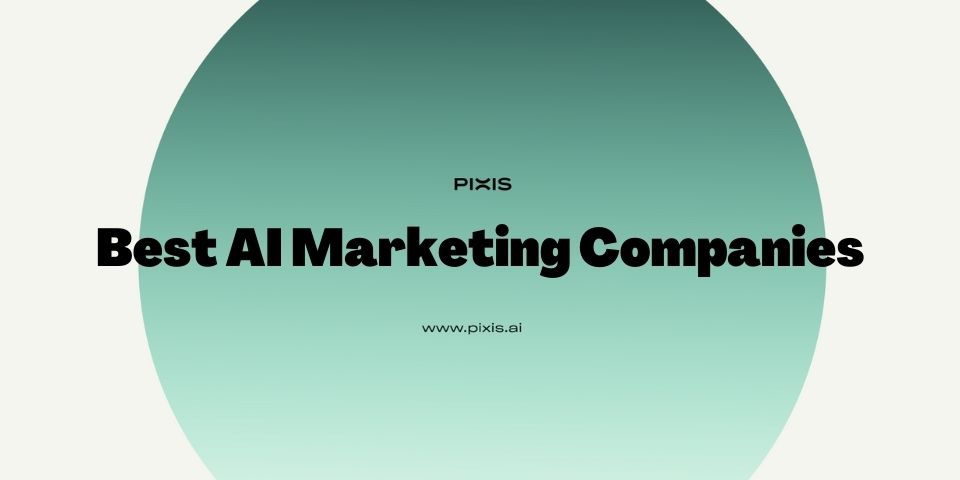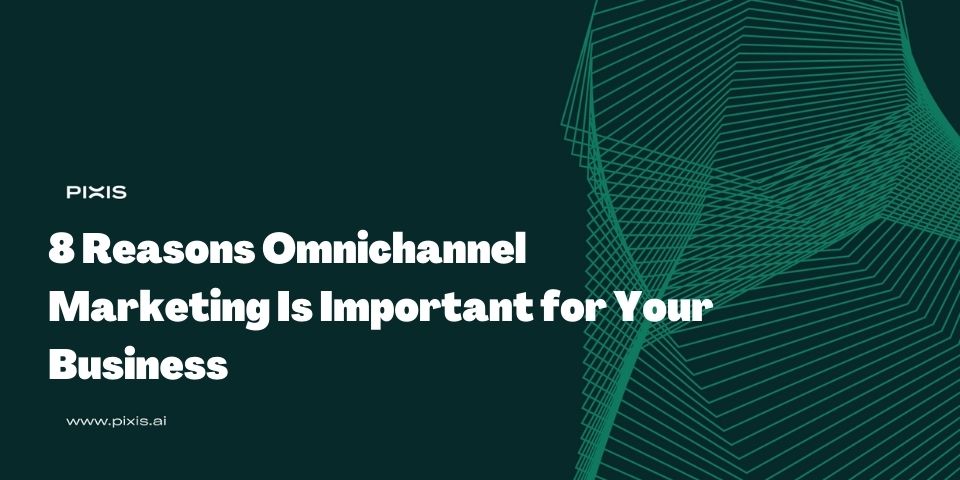How to Use AI for Making Advertisements
When using AI for making advertisements, you can test fresh ad ideas, refine them on the fly, and reach the right audience—all without breaking a sweat or wasting ad spend.
A major advantage here is speed. AI processes data tirelessly, suggesting, optimizing, and even creating ads that resonate. As a result, you generate ads that speak directly to what your audience wants.
In this article, you’ll learn exactly how to use AI to boost your advertisements.
6 Steps to Using AI for Making Advertisements
Step 1: Choose the Right AI Tool
There are a lot of AI tools for making advertisements in the market, so choosing the right one can feel overwhelming.
Some specialize in pay-per-click (PPC) campaign management, while others excel at analyzing user data to shape creative assets. The crucial factor is how these tools align with your goals, whether that’s driving sales or boosting brand awareness. It’s not about the flashiest option; it’s about the technology that meets your specific campaign needs.
Many tools come with robust analytics dashboards that track key performance indicators. For instance, Google’s Performance Max automates ad placements across search, display, and other channels. Large Language Models generate ad copy that matches your brand’s style. Then there are tools like Pixis’ AdVance, which is designed to distribute and optimize your ad budget across different platforms for the best results.
How to Choose the Best AI Tools
Once you have defined your objectives, match them to each tool’s strengths. If you need to manage multiple channels while keeping the budget tight, look for a solution that offers advanced budget optimization. If maintaining your brand voice is your main concern, lean toward tools built for copywriting.
Ease of use matters, too. A hefty set of features might look impressive on paper, but clunky software leads to headaches and wasted time. Explore support resources, tutorials, or user communities to see if you’ll spend more time troubleshooting than advertising. Whenever possible, request a trial period or demo. Hands-on experience lets you determine if the tool’s interface makes sense for you.
Step 2: Let AI Handle the Heavy Lifting in Ad Copywriting
AI can help you generate ad copy, and analyze your existing brand guidelines for phrasing, tone, and structure. Some platforms even learn from your past campaigns to keep the style consistent. The goal is to help you generate multiple dynamic ad variants, each crafted to showcase your offerings in the best light.
While these AI systems handle much of the work, your human touch ensures the final copy stays on-brand. The best approach is to provide your AI tool with a clear outline of what you need: the selling point, desired tone, and any brand guidelines. The AI then drafts options quickly. Review them for any awkward phrases that might slip through. Keep the best bits, refine, and you’ve got ready-to-run ad copy.
Here’s an example.
Imagine you run an e-commerce store selling eco-friendly products. Your brand voice is casually optimistic. You use an AI writing tool trained on your past campaigns and give it a prompt like, “Highlight sustainability, mention free shipping, and keep the tone fun.” Within seconds, it generates multiple angles—one focusing on compostable packaging, another on carbon-neutral shipping. Each version ties back to what you do best.
Next, you pick the version that feels most authentic, maybe blend a few lines from different variants, and launch. This process sidesteps the usual back-and-forth between writers and marketing teams. Instead, you move straight to tracking conversions to see which copy resonates. If you notice bolder statements yield higher engagement, you can instruct the AI to amplify that in future iterations.
Step 3: Use AI to Create Stunning Ad Visuals
Engaging visuals grab consumer attention and make your ad more compelling. Tools that use generative AI for ad creative, such as Pixis’ AdRoom, use prompts to generate high-quality ads that showcase your product in the best light and adapt it to different platforms.
These platforms employ computer vision to analyze and interpret images. It’s like having a design assistant who never gets tired of testing combinations, or providing fresh ideas and options that might not have been considered otherwise.
Here’s how it works. First, you supply a basic prompt. For example, you might need a dynamic banner for a summer sale. AI suggests background images, color palettes that evoke sunny vibes, or typography that stands out on social media feeds. If you’re short on stock images or relevant icons, the platform often has an integrated library.
When your design is ready, you can quickly export variations to match the format needed for each advertising channel.
Step 4: Get Personal with AI-Driven Targeting
AI takes personalization to the next level by tracking user behaviors in real time, spotting patterns, and grouping audiences by shared traits. This kind of AI-powered targeting amplifies your outreach. Instead of running generic ads, you serve content tailored to each unique slice of your market.
While traditional methods rely on static data sets, AI continuously adapts to changes in consumer behavior. It might notice that your younger audience responds to fun reels on social media, while an older demographic prefers email offers.
AI targeting tools can also trigger different messages based on user interactions. In seconds, you can pivot from a broad approach to micro-campaigns that speak directly to audience segments.
Let’s say you handle marketing for a software startup targeting freelancers and agencies. Your AI tool flags that free trial sign-ups are spiking, so you set up personalized campaigns that highlight the independence your app offers, while agencies see a pitch about collaboration features. Each group feels like your brand understands them, delivering a personalized customer experience and helping your cost per acquisition drop.
These micro-campaigns run simultaneously, with the system monitoring how each one performs. If data shows freelancers respond better to testimonials, AI quickly adjusts your messaging to replicate that success. Over time, these tailored strategies build stronger brand loyalty because your audience senses that you “get” them.
Step 5: Automate and Optimize for Maximum ROI
AI automates tasks like adjusting bids, swapping out underperforming creatives, and distributing budgets across channels. Programmatic advertising tools decide in milliseconds whether a particular audience member is worth bidding on, which helps you improve your ad timing.
These automated systems also crunch numbers to find which channels, keywords, or audiences yield the best returns. Algorithms run tests around the clock without you hovering over them, and make small adjustments that lead to big improvements over time.
Let’s say you’re running an online campaign for a subscription-based meal kit service. You’ve got a set budget and multiple channels such as Instagram, Google Search, and Reddit. The AI platform notices that your meal kit ads on Instagram are grabbing huge engagement from busy parents. Meanwhile, the same ad is stalling elsewhere. The system immediately ramps up spending on Instagram and modifies or pauses the underperforming ads to prevent overspending.
Your campaign dollars go further, and you gather valuable data. Next time, you might skip the underperforming channel altogether.
Step 6: Monitor, Tweak, and Scale
AI may be your digital assistant, but total autopilot isn’t the way to go. Keep an eye on performance metrics, like click-through rates and conversions, to validate the AI’s choices. Use analytics to help you spot hidden trends, especially if your market shifts quickly. A new product line or a change in consumer attitudes might require rethinking your approach.
Many AI dashboards provide real-time analytics and alert you to anomalies. If cost per click suddenly jumps for a specific demographic, you’ll see it immediately. Knowing what’s happening behind the scenes gives you the power to intervene or pivot.
For example, an online bookstore might notice fantasy titles selling more than the books in the thriller section. AI also notices the shift and adjusts ad spend to highlight popular fantasy picks. It might also experiment with new angles, like bundling these titles for fans who can’t get enough.
If performance dips for a couple of weeks, the system flags it. You dive into the dashboard to see whether user interest is dropping or if a competitor just launched a discount campaign. Based on the data, you update your offers or pivot your creative strategy. The combination of AI speed and your insights helps you maintain momentum when unexpected changes hit.
Embrace AI with Pixis to Elevate Your Advertising Campaigns
Using AI for making advertisements is a necessity for brands that want to stay ahead. The technology does the heavy lifting so you can come up with better ways to connect with your audience. This approach blends your unique creativity with the power of technology to create campaigns that reach people and also resonate on a personal level.
If you’re looking for a partner to guide you through this journey, consider Pixis’ AI platform for growth marketing. It helps performance and creative teams run high-quality campaigns efficiently and at scale, resulting in an average ROI increase of 28%. Book a demo to learn more.







